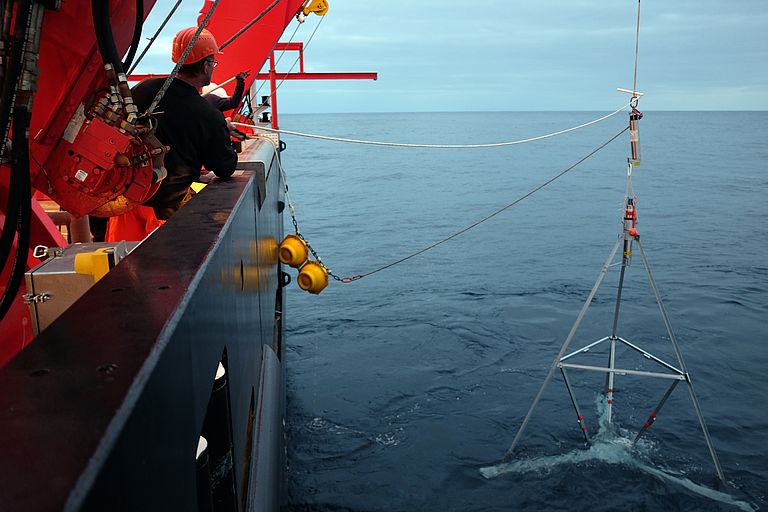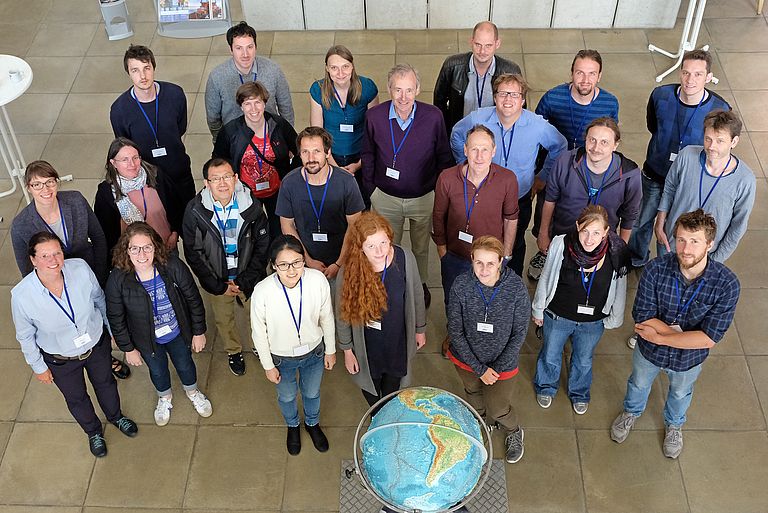Chile – a hub for geoscientific research
Partners of the Chilean Plate Boundary Observatory IPOC meet at GEOMAR
28 June 2017 / Kiel. Offshore and onshore research on natural hazards such as earthquakes and volcanism in Chile is the focus of the international IPOC symposium. On 27 and 28 June 2017, it is being held for the first time at the GEOMAR Helmholtz Centre for Ocean Research Kiel. More than 30 scientists presented results of their work in South America.
IPOC is the abbreviation for the multidisciplinary Integrated Plate Boundary Observatory Chile, which is operated by scientists from Europe and America. With a wide range of decentralized instrument systems, both on land and offshore, they measure earthquakes, crustal deformation and volcanic activity. “Northern Chile is the ideal location for such an observatory. There the oceanic Nazca plate subducts beneath the South American plate. Along this plate boundary, more than a quarter of the seismic energy worldwide is released,“ explains Professor Heidrun Kopp of GEOMAR, who organized the workshop together with her colleagues. “This gives us the opportunity to analyze the interactions between surface processes, like volcanism, and phenomena at depth.” Northern Chile and its Atacama desert are one of the driest regions on earth, providing excellent geological archives in the sedimentary deposits from which past processes can be studied.
The members of the IPOC consortium, which operates the observatory, come from France, Germany and, of course, from Chile, and meet at regular intervals for scientific exchange on future expeditions. “Hosting the meeting at an ocean research center is very timely as GEOMAR has implemented the marine component of the observatory,” explains Dr. Dietrich Lange, who has been active in Chile for many years, “the observatory provides the unique opportunity to link the processes that we monitor on the seabed with the observations on land".
Since the end of 2015, GeoSEA is measuring the tectonic strain off the coast of northern Chile in up to 5800 meters of water depth. “The GeoSEA network is located in a region that is repeatedly hit by earthquakes and tsunamis, so that the data will provide important information on sub-seafloor dynamics,” says Dietrich Lange, “which are complemented by seafloor recordings of the earthquake activity for two years”. In addition to cruises with the German research vessel SONNE and the US research vessel LANGSETH, the GeoSEA project was also supported by the Chilean navy, whose frigate OVP TORO deployed equipment.
The two-day meeting in Kiel is now intended to integrate the marine results with the long-term activities on land. “The visit in Kiel gives our land-based colleagues an opportunity to get an impression of the logistical complexity of marine research and to experience our equipment. For scientists who mainly work on land, it is always surprising how complex work at sea may be, "says Heidrun Kopp.




